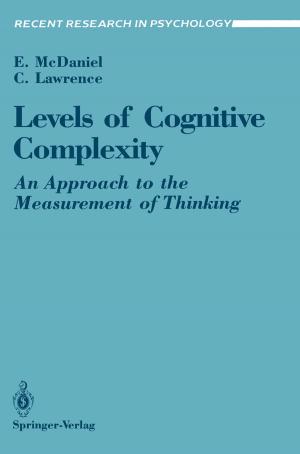Digital Da Vinci
Computers in Music
Nonfiction, Science & Nature, Mathematics, Applied, Computers, Advanced Computing, Computer Science, History| Author: | ISBN: | 9781493905362 | |
| Publisher: | Springer New York | Publication: | April 11, 2014 |
| Imprint: | Springer | Language: | English |
| Author: | |
| ISBN: | 9781493905362 |
| Publisher: | Springer New York |
| Publication: | April 11, 2014 |
| Imprint: | Springer |
| Language: | English |
The Digital Da Vinci book series opens with the interviews of music mogul Quincy Jones, MP3 inventor Karlheinz Brandenburg, Tommy Boy founder Tom Silverman and entertainment attorney Jay L. Cooper. A strong supporter of science, technology, engineering and mathematics programs in schools, The Black Eyed Peas founding member will.i.am announced in July 2013 his plan to study computer science. Leonardo da Vinci, the epitome of a Renaissance man, was an Italian polymath at the turn of the 16th century. Since the Industrial Revolution in the 18th century, the division of labor has brought forth specialization in the workforce and university curriculums. The endangered species of polymaths is facing extinction. Computer science has come to the rescue by enabling practitioners to accomplish more than ever in the field of music. In this book, Newton Lee recounts his journey in executive producing a Billboard-charting song like managing agile software development; M. Nyssim Lefford expounds producing and its effect on vocal recordings; Dennis Reidsma, Mustafa Radha and Anton Nijholt survey the field of mediated musical interaction and musical expression; Isaac Schankler, Elaine Chew and Alexandre François describe improvising with digital auto-scaffolding; Shlomo Dubnov and Greg Surges explain the use of musical algorithms in machine listening and composition; Juan Pablo Bello discusses machine listening of music; Stephen and Tim Barrass make smart things growl, purr and sing; Raffaella Folgieri, Mattia Bergomi and Simone Castellani examine EEG-based brain-computer interface for emotional involvement in games through music and last but not least, Kai Ton Chau concludes the book with computer and music pedagogy. Digital Da Vinci: Computers in Music is dedicated to polymathic education and interdisciplinary studies in the digital age empowered by computer science. Educators and researchers ought to encourage the new generation of scholars to become as well rounded as a Renaissance man or woman.
The Digital Da Vinci book series opens with the interviews of music mogul Quincy Jones, MP3 inventor Karlheinz Brandenburg, Tommy Boy founder Tom Silverman and entertainment attorney Jay L. Cooper. A strong supporter of science, technology, engineering and mathematics programs in schools, The Black Eyed Peas founding member will.i.am announced in July 2013 his plan to study computer science. Leonardo da Vinci, the epitome of a Renaissance man, was an Italian polymath at the turn of the 16th century. Since the Industrial Revolution in the 18th century, the division of labor has brought forth specialization in the workforce and university curriculums. The endangered species of polymaths is facing extinction. Computer science has come to the rescue by enabling practitioners to accomplish more than ever in the field of music. In this book, Newton Lee recounts his journey in executive producing a Billboard-charting song like managing agile software development; M. Nyssim Lefford expounds producing and its effect on vocal recordings; Dennis Reidsma, Mustafa Radha and Anton Nijholt survey the field of mediated musical interaction and musical expression; Isaac Schankler, Elaine Chew and Alexandre François describe improvising with digital auto-scaffolding; Shlomo Dubnov and Greg Surges explain the use of musical algorithms in machine listening and composition; Juan Pablo Bello discusses machine listening of music; Stephen and Tim Barrass make smart things growl, purr and sing; Raffaella Folgieri, Mattia Bergomi and Simone Castellani examine EEG-based brain-computer interface for emotional involvement in games through music and last but not least, Kai Ton Chau concludes the book with computer and music pedagogy. Digital Da Vinci: Computers in Music is dedicated to polymathic education and interdisciplinary studies in the digital age empowered by computer science. Educators and researchers ought to encourage the new generation of scholars to become as well rounded as a Renaissance man or woman.















